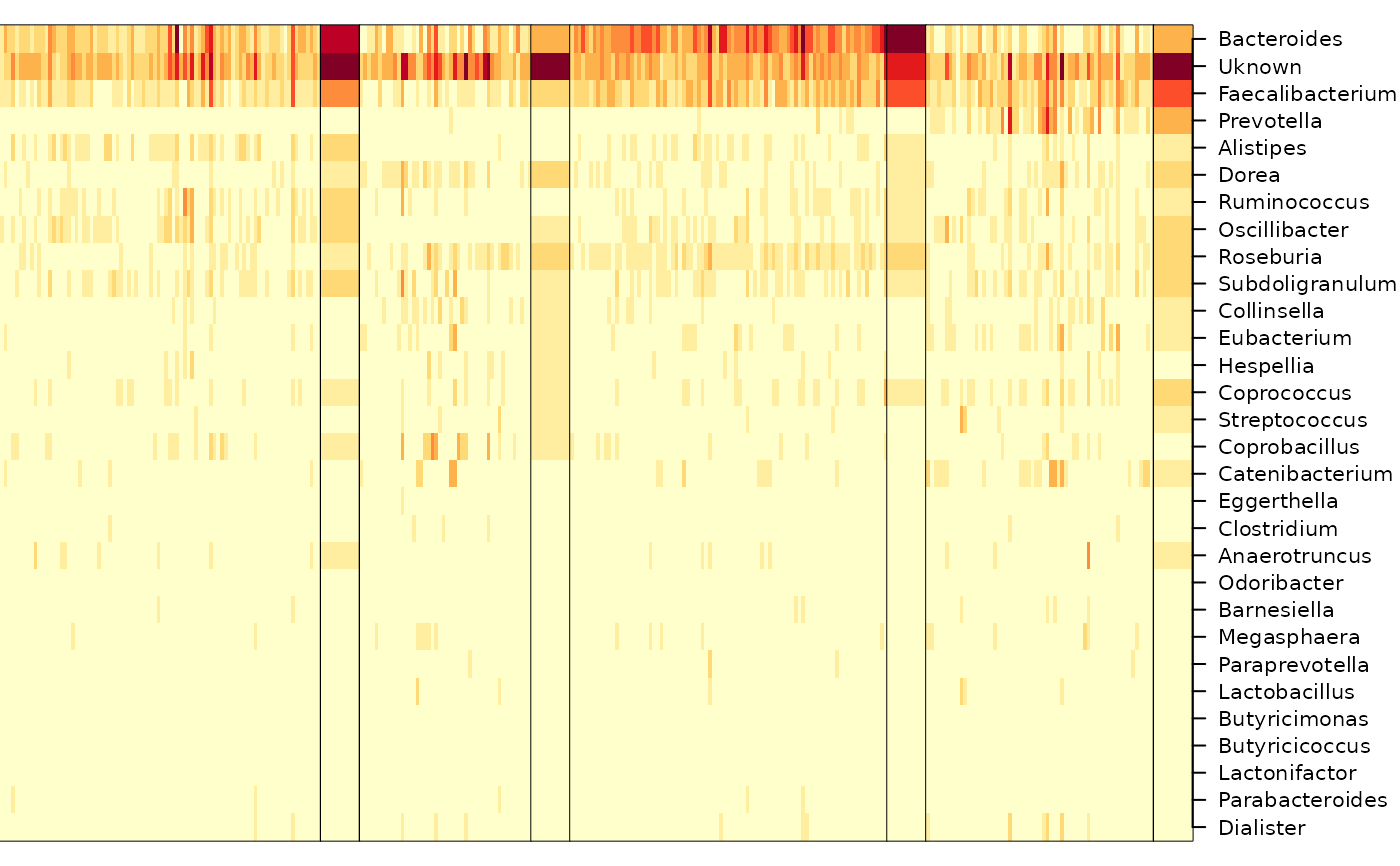Heatmap representation of samples assigned to Dirichlet components.
heatmapdmn.RdProduce a heat map summarizing count data, grouped by Dirichlet component.
Usage
heatmapdmn(count, fit1, fitN, ntaxa = 30, ...,
transform = sqrt, lblwidth = 0.2 * nrow(count), col = .gradient)Arguments
- count
A matrix of sample x taxon counts, as supplied to
dmn.- fit1
An instance of class
dmn, from a model fit to a single Dirichlet component,k=1indmn.- fitN
An instance of class
dmn, from a model fit toN != 1components,k=Nindmn.- ntaxa
The
ntaxamost numerous taxa to display counts for.- ...
Additional arguments, ignored.
- transform
Transformation to apply to count data prior to visualization; this does not influence mixture membership or taxnomic ordering.
- lblwidth
The proportion of the plot to dedicate to taxanomic labels, as a fraction of the number of samples to be plotted.
- col
The colors used to display (possibly transformed, by
transform) count data, as used byimage.
Details
Columns of the heat map correspond to samples. Samples are grouped by Dirichlet component, with average (Dirichlet) components summarized as a separate wide column. Rows correspond to taxonomic groups, ordered based on contribution to Dirichlet components.
Author
Martin Morgan mailto:mtmorgan.xyz@gmail.com
